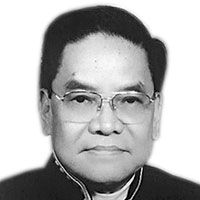Posthysterectomy HRT linked to Parkinson’s

June 22, 2003 | 12:00am
Unopposed estrogen use by women with a history of hysterectomy appears to triple their risk of Parkinson’s disease as reported at the annual meeting of the American Academy of Neurology. In contrast, use of hormone replacement therapy (HRT) may reduce – not boost – Parkinson’s risk in women with a natural menopause, particularly when HRT use is long in duration and recent, added one doctor in epidemiology at Stanford (California) Universtiy. She reported on 367 postmenopausal women who participated in the case-control Parkinsonian Epidemiology at Kaiser (PEAK) study. The study population consisted of 367 postmenopausal women at Kaiser Permanente of Northern California. Within the group, 178 were diagnosed with Parkinson’s disease in 1994-1995, and the other 189 were age-matched controls. Data regarding reproductive factors and exposure to exogenous and endogenous estrogen were gathered by structured interview.
The impetus for the PEAK study arose from the observation that men are at greater risk of developing Parkinson’s disease than women. This raised the possibility that hormonal factors might play an etiologic role in the neurodegenerative disease. Among all PEAK participants, a history of exposure to exogenous estrogen wasn’t associated with any increase or decrease in risk of Parkinson’s disease. But a closer look based upon the type of menopause told a different story. Among women with natural menopause, those who had used HRT for more than 10 years and were either current HRT users or had last used it less than five years earlier had a 70 percent reduction in risk of Parkinson’s disease, compared with HRT never-users. Those who’d used HRT for less than 10 years earlier had a non-significant 20 percent reduction in risk.
On the other hand, women who had a hysterectomy had a two-fold increased risk of Parkinson’s disease if they’d use HRT for 10 years or less rising to a 3.5-fold increased risk with greater than 10 years of HRT use, compared with never-users. Recent use of exogenous estrogen did not have an impact upon Parkinson’s disease risk in women who’d undergone hysterectomy.
The association between exogenous estrogen use and Parkinson’s disease was similar among women with hysterectomy regardless of whether they’d also undergone bilateral oophorectomy. Neither age at menarche nor a woman’s type of menopause was associated with Parkinson’s disease risk. But early age at last menstrual period was inversely related to risk. Women whose last menstrual period occurred at age 44 years or younger had roughly a 50 percent reduction in risk of Parkinson’s disease. Limitations of the PEAK study are that database doesn’t contain specific information about the doses and forms of HRT prescribed or about patient compliance. But women with hysterectomy would typically receive unopposed estrogen, while those with natural menopause would be placed on estrogen/progestin HRT to protect their endometrium. One doctor confessed that she and her co-investigators view the PEAK results as somewhat of a mystery. They can’t find any biologic basis for estrogen – and progrestin – mediated hormonal effects upon the dopaminergic system that would enhance or protect against Parkinson’s disease. One audience member suggested reanalyzing the data by history of surgery to see if "the parkinson’s disease may be occurring as a postanesthesia rather than a postestrogen complication.
The impetus for the PEAK study arose from the observation that men are at greater risk of developing Parkinson’s disease than women. This raised the possibility that hormonal factors might play an etiologic role in the neurodegenerative disease. Among all PEAK participants, a history of exposure to exogenous estrogen wasn’t associated with any increase or decrease in risk of Parkinson’s disease. But a closer look based upon the type of menopause told a different story. Among women with natural menopause, those who had used HRT for more than 10 years and were either current HRT users or had last used it less than five years earlier had a 70 percent reduction in risk of Parkinson’s disease, compared with HRT never-users. Those who’d used HRT for less than 10 years earlier had a non-significant 20 percent reduction in risk.
On the other hand, women who had a hysterectomy had a two-fold increased risk of Parkinson’s disease if they’d use HRT for 10 years or less rising to a 3.5-fold increased risk with greater than 10 years of HRT use, compared with never-users. Recent use of exogenous estrogen did not have an impact upon Parkinson’s disease risk in women who’d undergone hysterectomy.
The association between exogenous estrogen use and Parkinson’s disease was similar among women with hysterectomy regardless of whether they’d also undergone bilateral oophorectomy. Neither age at menarche nor a woman’s type of menopause was associated with Parkinson’s disease risk. But early age at last menstrual period was inversely related to risk. Women whose last menstrual period occurred at age 44 years or younger had roughly a 50 percent reduction in risk of Parkinson’s disease. Limitations of the PEAK study are that database doesn’t contain specific information about the doses and forms of HRT prescribed or about patient compliance. But women with hysterectomy would typically receive unopposed estrogen, while those with natural menopause would be placed on estrogen/progestin HRT to protect their endometrium. One doctor confessed that she and her co-investigators view the PEAK results as somewhat of a mystery. They can’t find any biologic basis for estrogen – and progrestin – mediated hormonal effects upon the dopaminergic system that would enhance or protect against Parkinson’s disease. One audience member suggested reanalyzing the data by history of surgery to see if "the parkinson’s disease may be occurring as a postanesthesia rather than a postestrogen complication.
BrandSpace Articles
<
>
- Latest
- Trending
Trending
Latest
Trending
Latest
Recommended























